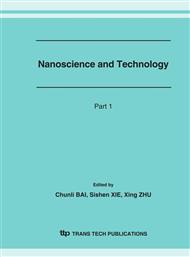p.1269
p.1273
p.1277
p.1281
p.1285
p.1289
p.1293
p.1297
p.1301
Performance Investigation of a Micropositioning Table
Abstract:
In order to compensate the force induced deformation of the precision grinding, a piezoelectrically driven micropositioning table is developed to actuate the workpiece for error compensation. To better understand the performance of the micropositioning table, the deformation patterns and stiffness distribution of the micropositioning table under normal grinding force are investigated by computational finite element analysis method. It is noted that the moving part of the micropositioning table can be considered as rigid body and the maximum static stiffness is located at the center of the top surface. The experimental tests are carried out to verify the analysis.
Info:
Periodical:
Pages:
1285-1288
Citation:
Online since:
March 2007
Authors:
Keywords:
Price:
Сopyright:
© 2007 Trans Tech Publications Ltd. All Rights Reserved
Share:
Citation:


